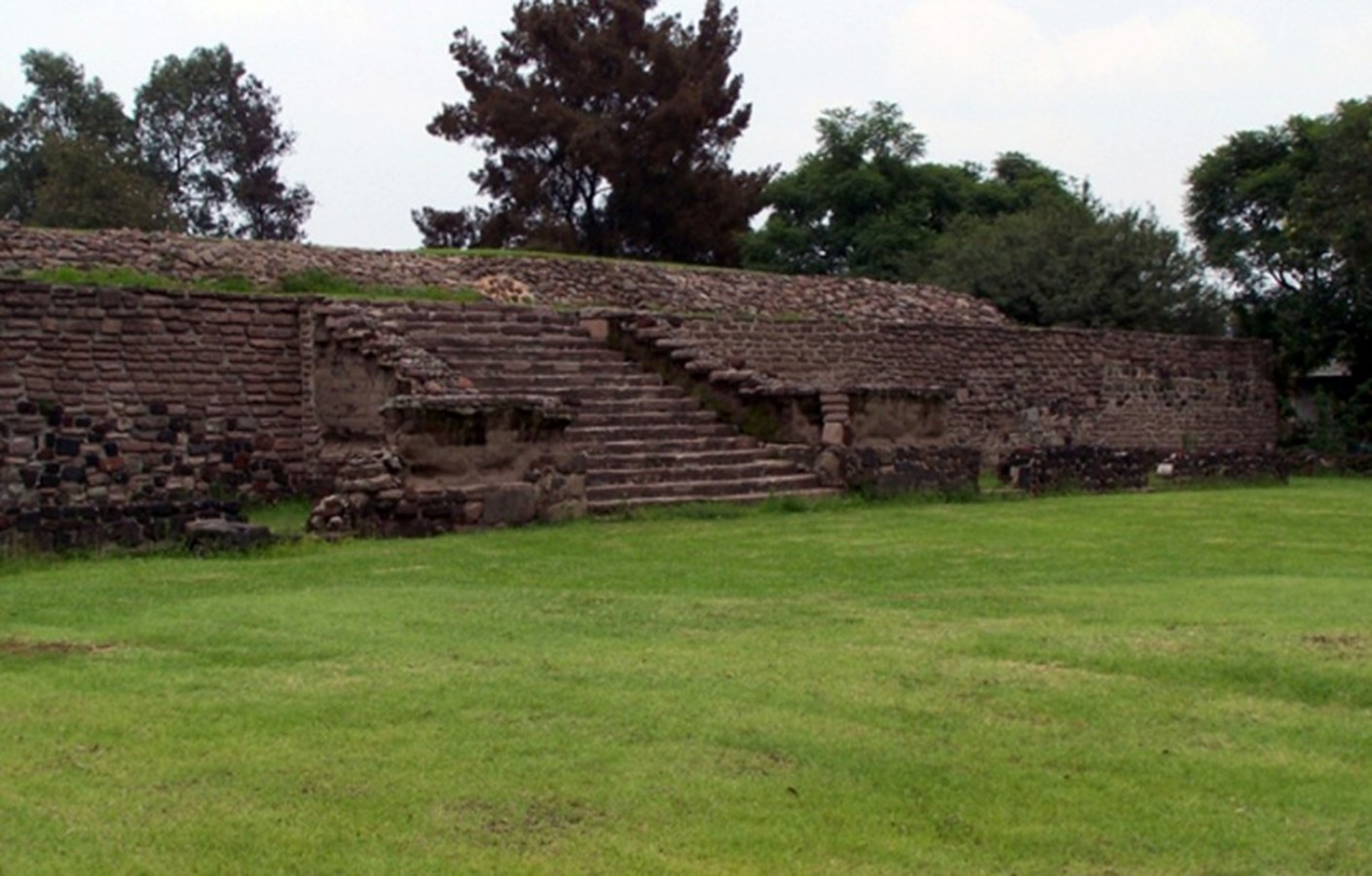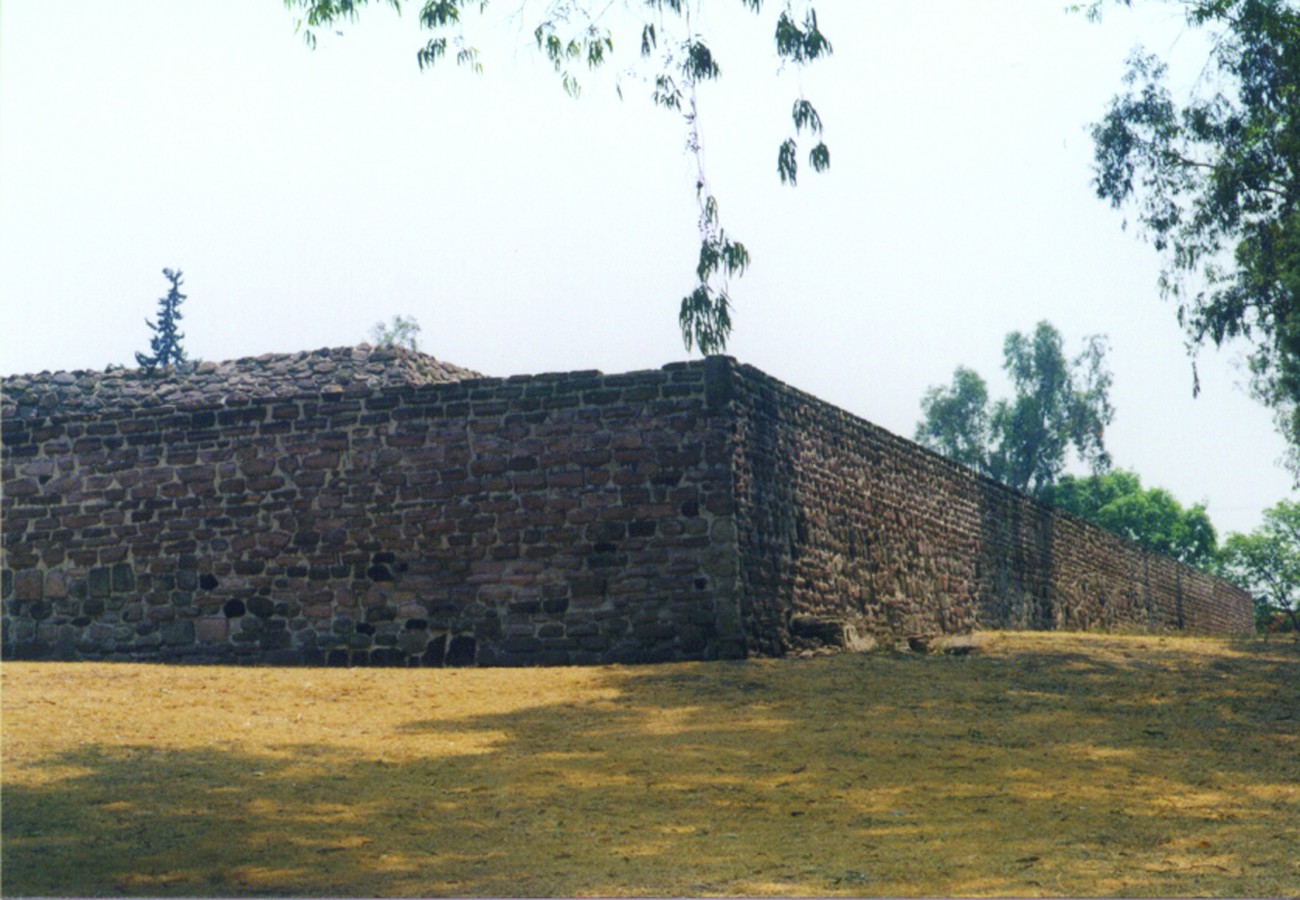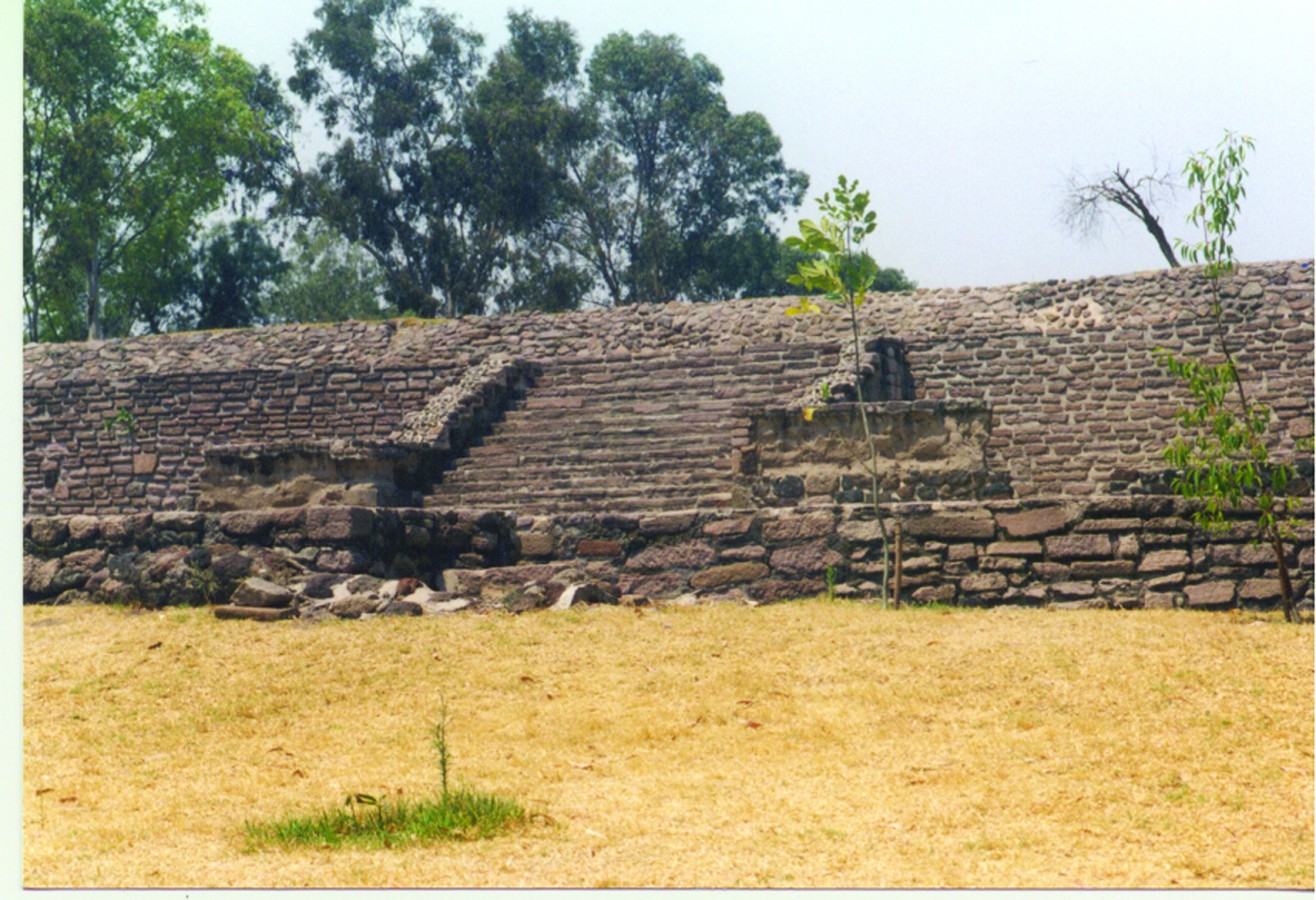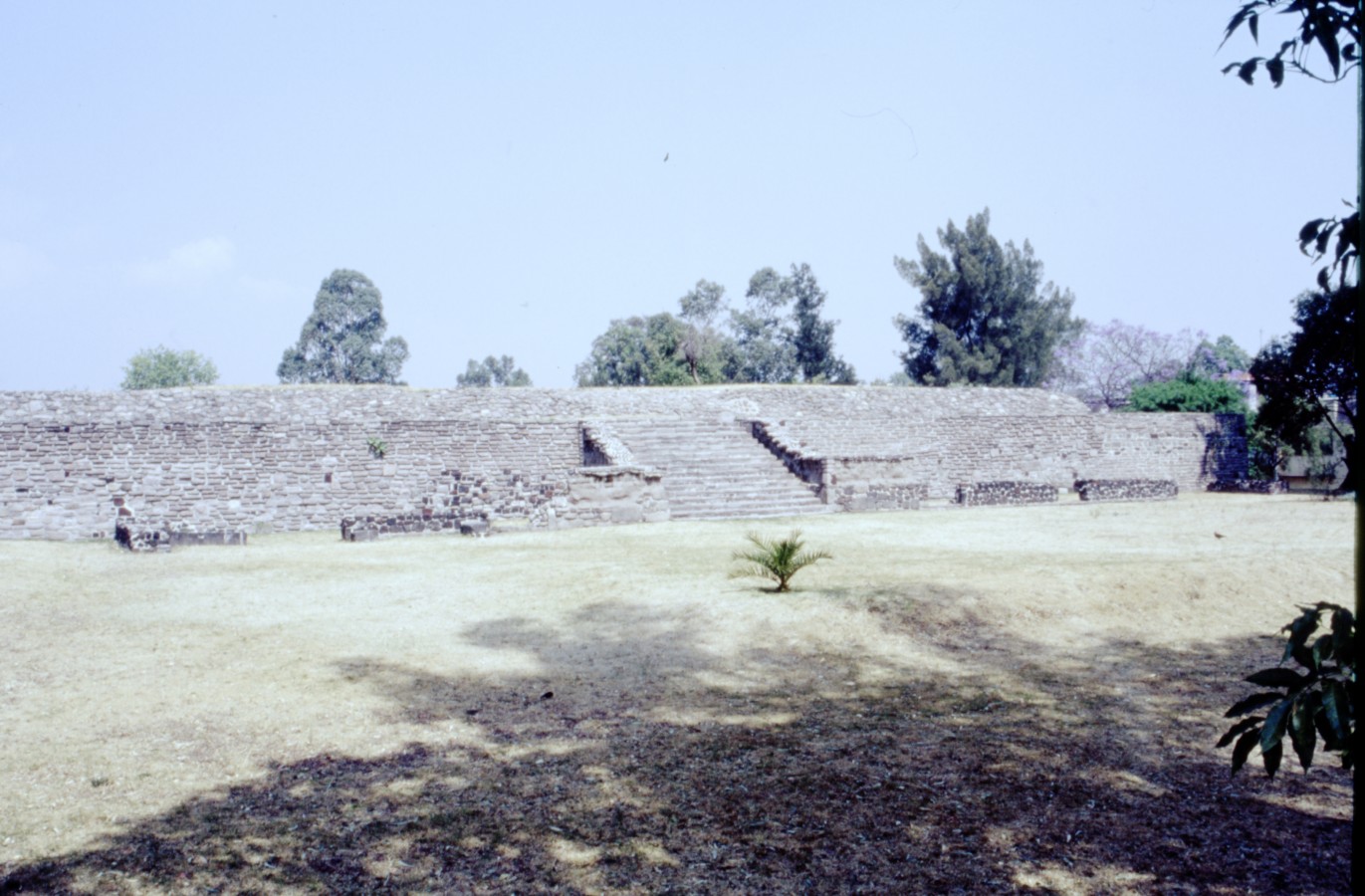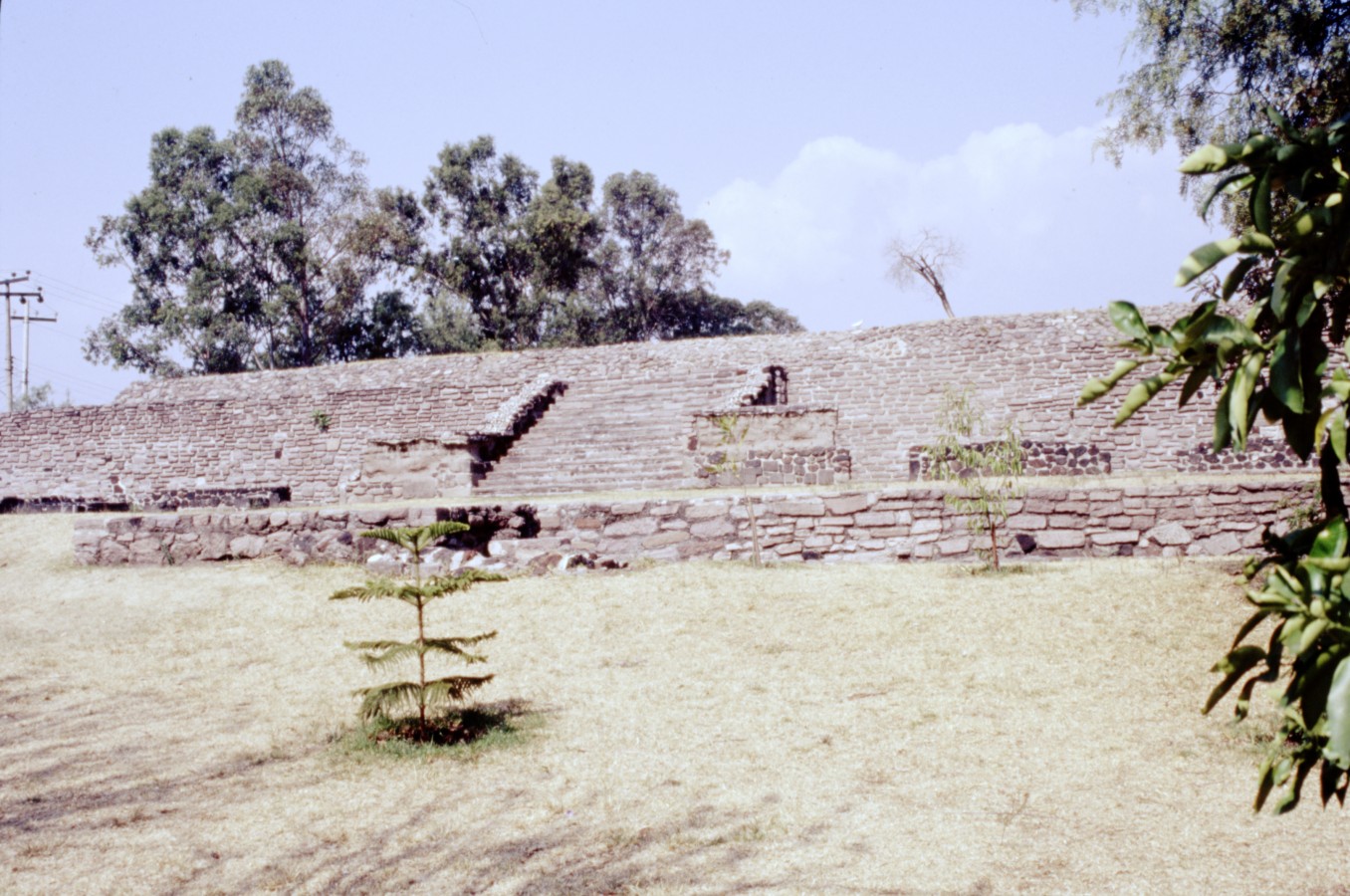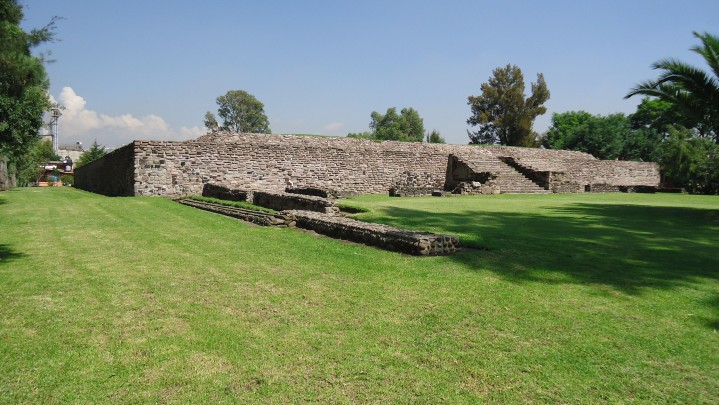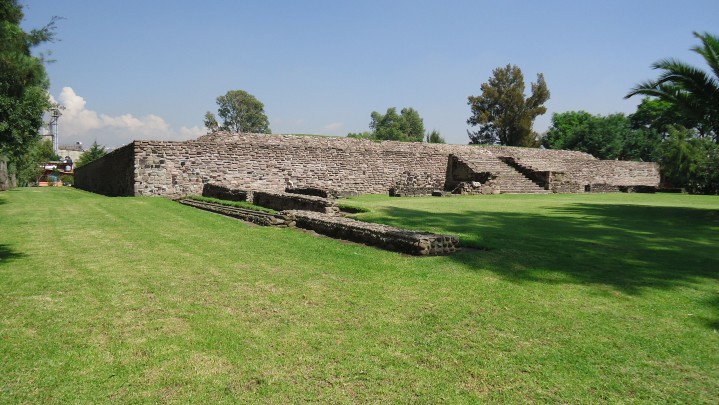El Conde
The site was named in the mid-nineteenth century after Manuel Conde, owner and builder of the sixteenth-century El Prieto hacienda.
Located in Naucalpan de Juárez, not far from the Periférico Norte (highway) in the northern suburbs of Mexico City, this site offers something unusual, a palace belonging to the fifteenth century pre-Hispanic nobility, one of the few examples of the civic architecture of the period.
About the site
The El Conde archeological site in the district and municipality of Naucalpan de Juárez presents a large square platform. The history of the settlement goes back to the final stage of Teotihuacan (600-800), since fragments of ceramic material have been found from this period. Remains from the Toltec period (800-1100) and Early Postclassic (1200-1430) have also been found.
This great platform might also have been the site of a palace or tecpan because there is an east-west oriented access stairway, on both sides of which rooms were appended, a very common feature for this type of construction. The architectural shape of the platform is typical of the palaces found in the Valley of Mexico in the Late Postclassic, as can also be seen in several pre-Hispanic and colonial codices, including the Quinantzin Codex.
This great platform might also have been the site of a palace or tecpan because there is an east-west oriented access stairway, on both sides of which rooms were appended, a very common feature for this type of construction. The architectural shape of the platform is typical of the palaces found in the Valley of Mexico in the Late Postclassic, as can also be seen in several pre-Hispanic and colonial codices, including the Quinantzin Codex.
Did you know...
- Page 39 of the Mendoza Codex has a drawing of Moctezuma’s tecpan showing the lower rooms occupied by warriors, so it may be assumed that these rooms were used to house the warrior class.
- This is one of the few existing examples of civil architecture from the Late Postclassic period.
Practical information
Tuesday to Sunday from 10:00 to 17:00 hrs. Last entry 16:00 hrs.
Free entry
Se localiza en la calle Ozumba núm. 15, colonia El Conde, Municipio de Naucalpan de Juárez, Estado de México.
In Mexico City, take the Periférico Norte beltway in the direction of Unidad Cuauhtémoc, exit at Primero de Mayo Ave., turn right onto J. F. Kennedy, Andrés Atoto and Ozumba, as far as the junction with Texcoco.
Services
-
+52 (722) 167 1325
-
This email address is being protected from spambots. You need JavaScript enabled to view it.
Directory
Responsable
Sonia Georgina Sosa Chávez
This email address is being protected from spambots. You need JavaScript enabled to view it.
+52 (722) 21 39 581


